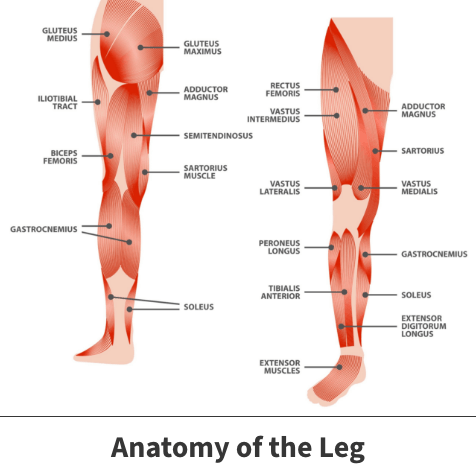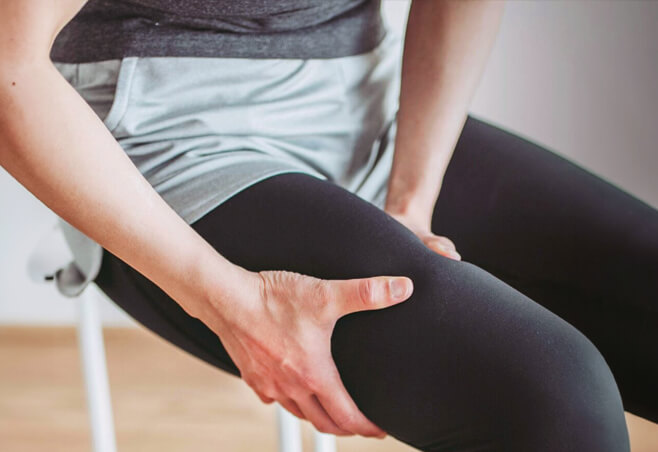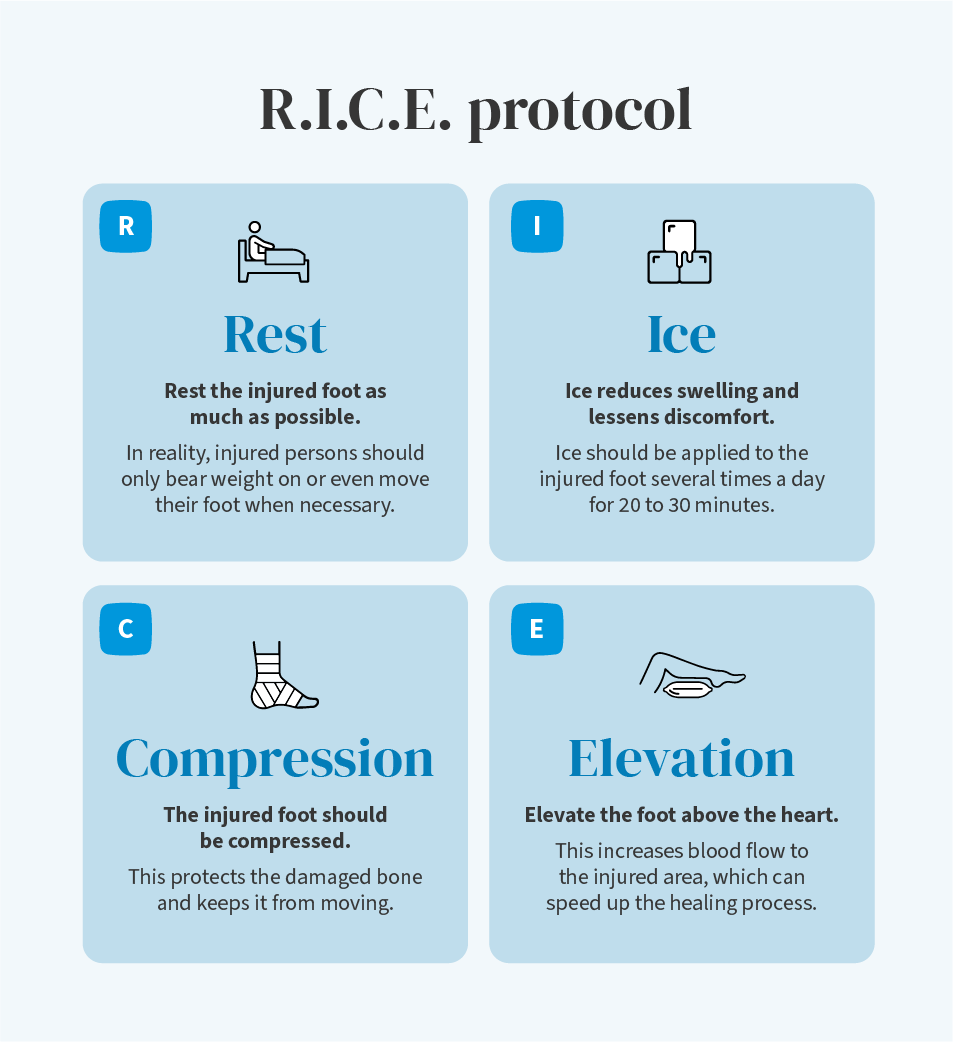Anatomy

The thighs are a group of muscles located between the knees and hips. The muscles in the front of the thigh are known as the quadriceps.
About
Though thigh bruises (contusions) can occur anywhere along the thigh, these injuries are most typically seen in the quadriceps. The quadriceps’ position at the front of the leg exposes them to physical contact.
Deep thigh bruising is categorized as mild, moderate, and severe. Mild occurrences produce bearable and usually short-lived symptoms. Moderate events cause more symptoms and possibly some degree of mobility issues. Severe injuries often bring about significant discomfort and potentially major mobility struggles.
Causes
Deep thigh bruising usually results from acute incidents like car accidents and falls, forceful contact in physical sports, or punches or slaps from fights.
Risk factors
Your risk of a deep thigh bruise increases if you play sports with significant physical contact, such as football, basketball, wrestling, and mixed martial arts. Participants in sports like hockey and lacrosse can also stand a greater chance of thigh contusions because of inadvertent strikes from the equipment used.
Symptoms
The specific symptoms depend on how serious the bruise is.
Deep thigh bruises tend to produce a number of common symptoms:
- pain
- swelling
- redness
- tenderness to the touch
- skin discoloration
- bleeding within the skin
In more serious instances, you might experience serious difficulties walking, standing, or even bending your leg or knee.
Complications
In a small percentage of cases, injured muscle turns into bone instead of healing as it usually should. Medically, this is called myositis ossificans.

Diagnosis
Doctors can usually reach a firm diagnosis after reviewing a patient’s symptoms and offering a visual examination of the injured thigh. Internal imaging apparatuses like X-rays and MRIs (magnetic resonance imaging) can be used to rule out other conditions that produce similar symptoms.
Treatment
Deep thigh bruises usually respond favorably to home care treatments. Surgery is not typically needed unless complications arise, or bruising occurs with some other type of severe physical injury.
Many doctors prescribe an initial at-home treatment known as the PRICE protocol.
The first aspect of the PRICE abbreviation is being pulled from participation. The moment one sustains what appears to be a deep thigh bruise, they should be pulled or remove themselves from an athletic competition or physical activity. The “P” in PRICE stands for pull.
- Rest – The bruised leg should be rested for prolonged intervals. Injured persons are strongly urged only to stand or walk only when absolutely needed until noticeable healing has taken place.
- Ice – Ice-filled compresses should be applied to the wounded thigh. This eases pain and lessens swelling.
- Compression – The bruised area should be compressed using some type of loose-fitting material.
- Elevation – Following many physical injuries, the leg should be elevated above the heart to increase blood flow. Those with quadriceps injuries are firmly encouraged to keep their knees bent. This position maintains the wounded leg’s strength and range of motion.
Moderate to more severe injuries often benefit from a course of physical therapy. These specially designed leg exercises are geared toward helping the injured muscle regain any lost strength and flexibility.

Recovery
It is hard to give a specific recovery time frame. Each case is unique and progresses at its own rate. The injured individual will likely not be permitted to return to normal activity until they can move freely without pain, perform all movements necessary to participate in athletic competition, and ensure their leg’s strength has completely returned. In most instances, this will be at least several weeks.
Prevention
Deep thigh bruises can sometimes be prevented by wearing protective safeguards like pads or sleeves and performing stretching exercises before engaging in physical activity.
Related specialties
- ACL Injuries
- Arthroscopic Chondroplasty
- Articular Cartilage Restoration
- Fractures of the Tibial Spine
- Iliotibial Band Syndrome
- Lateral Collateral Ligament (LCL) Injuries
- MACI
- Medial Collateral Ligament Injuries
- Meniscus Tears
- Muscle Spasms
- Muscle Strains of the Calf
- Partial Knee Replacement
- Patellar Fracture
- Quadriceps Tendon Tear
- Runner's Knee
- Senior Strong
- Shin Splints
- Total Knee Replacement Surgery
